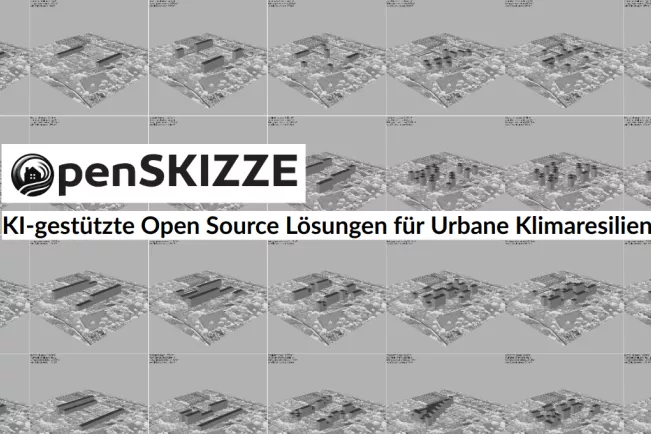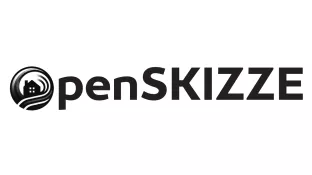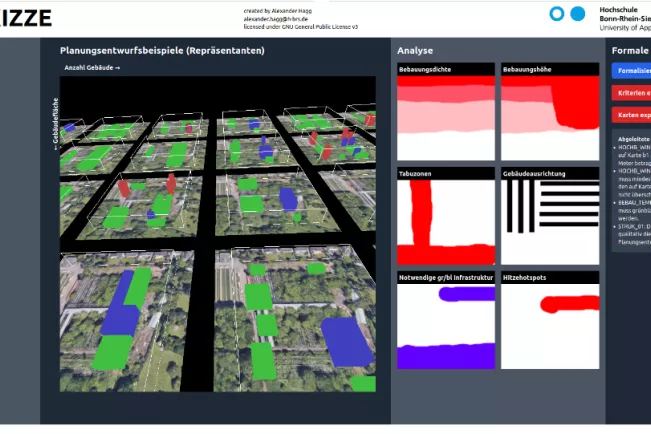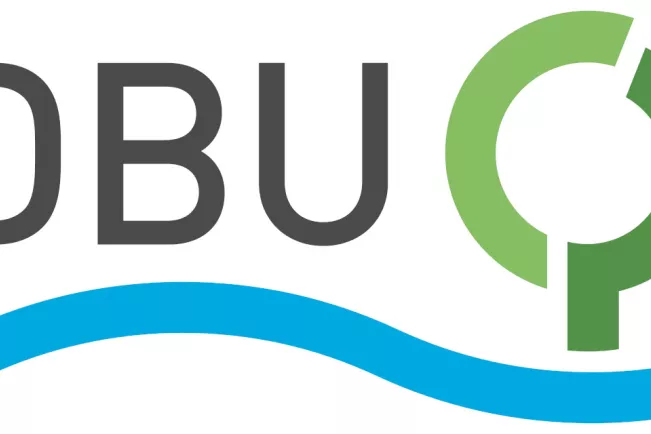OpenSKIZZE

Research project at a glance

Departments and Instituts
Funding type
Period
01.03.2024 to 31.08.2025
Project Description
The challenges of climate change make sustainable and climate-adapted planning and construction in cities unavoidable. However, despite existing research and modeling approaches, such as ZURES and KliMoPrax, there is a lack of widespread implementation of these findings in practical construction projects. The reasons lie in the complexity of the decision-making processes due to the many stakeholders involved, high time pressure, different local conditions, a lack of specialist knowledge and data in early process steps and high costs for expertise and software licenses.

As an open source AI assistant, OpenSKIZZE is intended to transfer the findings from climate models into concrete construction projects. This system is intended to involve all stakeholders in the process at an early stage and inform them about the effects of their decisions on the local urban climate. OpenSKIZZE uses AI-driven optimization algorithms and machine learning to determine the effects of urban planning and architectural decisions and measures on the climate and environment early in the planning and design process. OpenSKIZZE not only generates planning and design solutions, but also includes the visual preparation of the results in order to enable a common language between everyone involved. This enables effective coordination between different actors. The use of machine learning significantly reduces energy consumption by requiring fewer simulation processes (by three orders of magnitude).
OpenSKIZZE is being evaluated on two specific construction projects by the Montagstiftung Urbane Räume gAG and Neuer Stadtgärtnerei e.V. in Bonn. The partners provide specialist knowledge, process knowledge and requirements analyses. The database has already been made available by the city of Bonn. The construction projects are taking place on the site of the old city gardening center in Bonn, which is located in a cold air inflow corridor. The aim is to design the development in such a way that cold air flow and heat radiation through the development are optimized in order to reduce the heat load in the residential development adjacent to the north, which is located in an urban heat island. It has been proven in various studies that reducing the UHI temperature leads to significant energy cost savings and a reduction in CO2 emissions.
The tools developed within this project will be freely accessible and therefore have a multiplier effect for future applications. The application asks not only to assess the direct CO2 savings, but also to take future potential into account.
Cooperation partners
Sponsors

The Deutsche Bundesstiftung Umwelt is funding this project for the entire duration.

